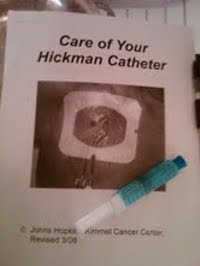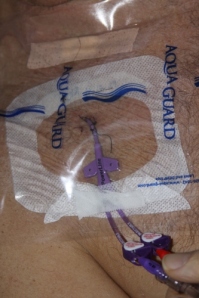So, in a little over a month I am scheduled to have my bone marrow transplanted. It sounds daunting but according to my nurse practitioner it will be rather anti-climactic. Apparently, I will receive the bone marrow harvested from my donor in the same manner I would receive a blood transfusion: hang the bags, hook them up to the pump, plug the line out of the pump into my Hickman Line, and then lie back and relax. I expect it might not be quite as easy to relax during the transplant as a typical transfusion but still, my job during this transaction between my donor and me is relatively easy. My donor, on the other hand, has a much more difficult task.
It amazes me that there is someone out there somewhere in the world who is not just a perfect match for me, but who is also willing to follow through with the donation. I have no idea where my donor lives or how far he or she has to travel for the procedure–he or she could live halfway around the world for all I know. Fortunately for the both of us, my hospital will cover the travel expenses and my insurance will cover the costs of the medical procedures; but still, what a disruption to life he or she is willing to make on my behalf, especially since my donor knows nothing about me, other than my life depends on his or her marrow. Likewise, I know nothing about my donor, other than he or she is truly generous and caring.
I am told that a year or so after my procedure I will be allowed to make contact with my donor, provided my donor wants to make contact with me. I will have to make that decision when the time comes. Right now I appreciate the anonymity of the process. It enables me to focus on preparing myself prior to the procedure and healing myself afterward without having to feel obligated to establishing and maintaining a relationship with my donor at the same time. Even to me this seems completely selfish, but it is how I feel.
Besides, how does one thank someone for such grand generosity anyway? Right now the only way I can think of is by simply saying thank you and trying to live the best life after the transplant as possible. We will have to wait and see if I feel differently a year from now.




